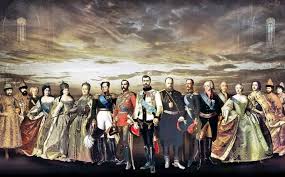The Romanov dynasty ruled Russia from 1613 until its dramatic fall in 1917, shaping the nation’s history across three centuries. The dynasty began when Michael Romanov, a 16-year-old boy, was chosen as Tsar by a national assembly to end the “Time of Troubles,” a period of chaos and foreign intervention that had plagued Russia.
Under the Romanovs, Russia transformed from a medieval state into one of Europe’s great powers. Peter the Great (1682-1725) played a pivotal role in this transformation, modernizing the country through sweeping reforms. He built a new capital, St. Petersburg, as Russia’s “window to the West,” reformed the military, and forced the nobility to adopt European customs and dress.
Catherine the Great (1762-1796), though not a Romanov by birth, continued this legacy of modernization during her remarkable reign. She expanded Russia’s territory, corresponded with Enlightenment philosophers, and became one of history’s most notable art collectors. Under her rule, Russia emerged as a true European superpower.
The 19th century brought both triumph and challenge for the Romanovs. Alexander I’s victory over Napoleon in 1812 marked a high point, while Nicholas I’s defeat in the Crimean War (1853-1856) exposed Russia’s need for modernization. Alexander II, known as the “Tsar Liberator,” enacted significant reforms, most notably the emancipation of the serfs in 1861. However, his assassination in 1881 by revolutionaries marked a turning point toward reaction and repression.
The last Romanov ruler, Nicholas II, faced mounting challenges as Russia entered the 20th century. Industrial unrest, calls for democratic reforms, and military defeats in the Russo-Japanese War and World War I eroded support for the monarchy. The February Revolution of 1917 forced Nicholas II to abdicate, and the subsequent October Revolution brought the Bolsheviks to power.
The dynasty’s end was marked by tragedy when Nicholas II, his wife Alexandra, their five children, and several servants were executed by Bolshevik forces in July 1918 in Yekaterinburg. This brutal act ended more than 300 years of Romanov rule and marked the beginning of the Soviet era.
The Romanov legacy remains visible in Russia today through the grand palaces, churches, and museums they built, particularly in St. Petersburg. Their art collections form the heart of the Hermitage Museum, one of the world’s greatest cultural institutions. While their rule ended in tragedy, the Romanov dynasty’s impact on Russian culture, politics, and society continues to fascinate historians and the public alike, representing both the grandeur and complexities of Russian imperial history.
newshub



Recent Comments